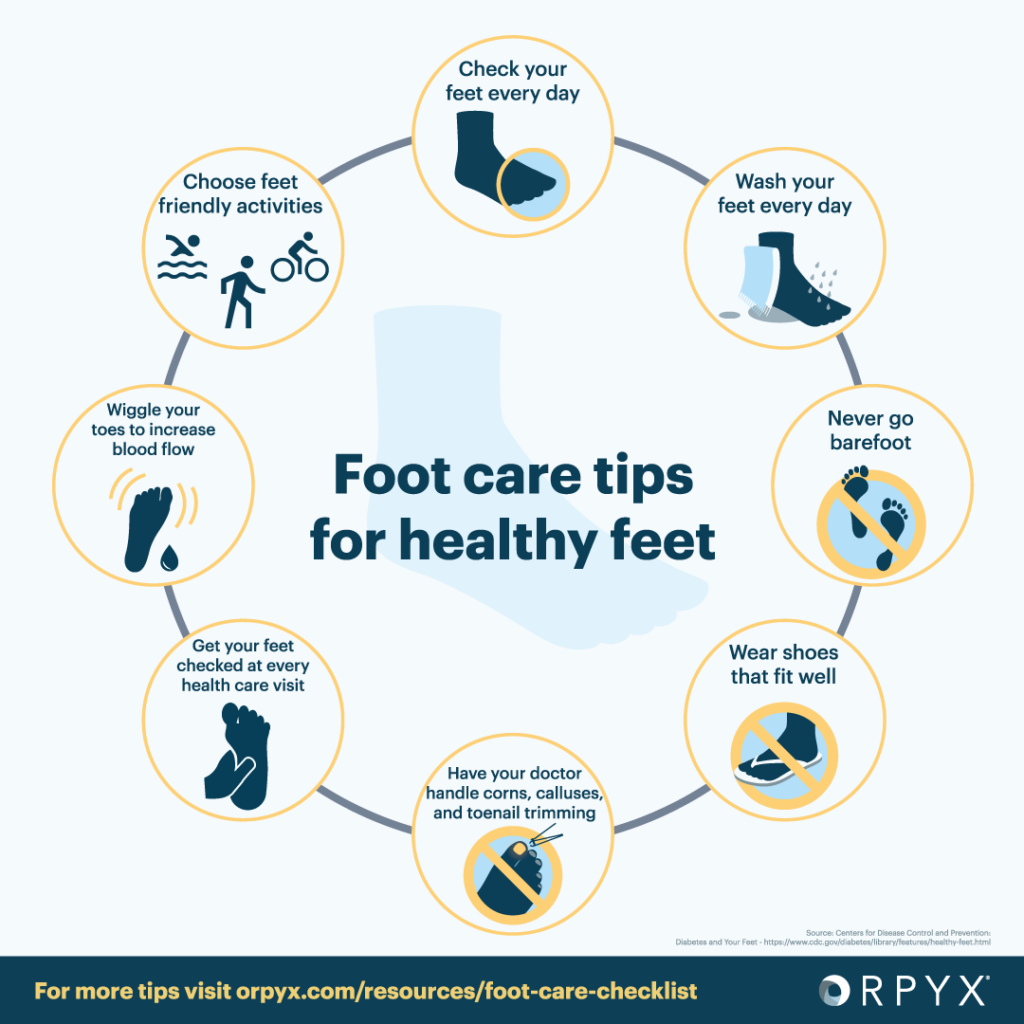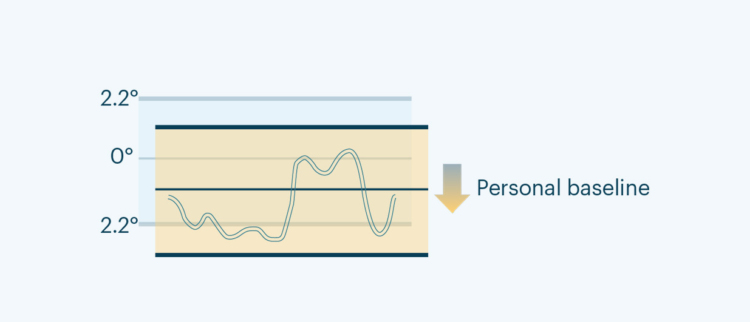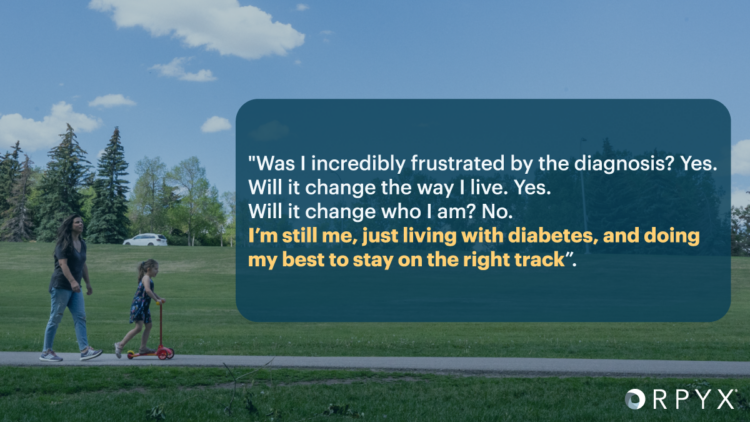The importance of foot care in diabetes management

Foot health is one of the 6 pillars of diabetes care. People living with diabetes are significantly more prone to damaging their feet. Cuts, bruises, or ulcers can go unnoticed due to nerve damage1. These injuries might be minor for others, but a person living with diabetes has a much harder time healing these wounds. Proper diabetes foot care is an essential part of limb preservation2.
Foot health is not only an essential part of preventing foot complications, but the feet are also the foundation for most simple exercises. Without the ability to stay mobile and exercise, blood-glucose regulation becomes even more challenging3.
Prevention of injuries is key in diabetic foot care. People with diabetes must be vigilant to inspect their feet for any changes and ensure clear communication with your doctor(s) when making a plan for footcare and when an issue arises.
What is proper foot care for diabetes?
This list is a great starting point for your foot care, talk to your doctor and make sure that these tips are right for you. The CDC shares these tips for healthy feet4:
- Check your feet every day
- Look for cuts, redness, swelling, sores, blisters, corns, calluses, and note any changes to the skin or nails
- Use a mirror or ask a family member to help if you can’t see the bottom of your feet
- Wash your feet every day
- Use warm water (not hot)
- Dry your feet completely
- Apply lotion to the top and bottom of your feet
- Never go barefoot
- Always wear shoes and socks, or slippers
- Wear shoes that fit well
- Toenails should be trimmed straight across, it is best to have your doctor or podiatrist do this for you
- Have your feet checked at every health visit
- Keep the blood flowing, wiggle your toes and put your feet up when you get a chance
What Are the Signs of Diabetic Foot Complications?
When checking your feet, it’s important to note these signs and contact your doctor if you discover6:
- Increased swelling in legs or feet
- Change in skin color
- Burning or tingling sensation
- Decreased sensitivity or loss of feeling in feet
- Numbness in the toes
- Hammertoes
- Cracks between toes
- Presence of bunions, planters warts, corns, and/or calluses
- Athlete’s foot
- Loss of hair on toes or lower legs
These may be early signs of foot complications so don’t wait for your next regularly scheduled appointment. Rather, see your regular doctor or foot doctor as soon as possible.
How does the Orpyx Sensory Insole system help keep feet healthy?
The Orpyx Sensory Insole system helps enable early intervention by remotely monitoring pressure, temperature, and activity. The information collected from the insoles allow our team of nurses to identify potential issues so they can be addressed by the patient’s physician before a small problem escalates.
The Orpyx Sensory Insole system aims to give control back to the wearer by remotely monitoring pressure, temperature, and activity. Enabling early intervention, the insoles allow our team of nurses to identify potential issues with patients and get them in to see their physician before a small problem escalates.
https://www.vascularsociety.org.uk/patients/conditions/16/diabetic_foot_problems
https://www.cdc.gov/diabetes/library/features/healthy-feet.html
https://www.foothealthfacts.org/conditions/diabetic-foot-care-guidelines
https://www.unitypoint.org/news-and-articles/warning-signs-diabetes-your-foot-health


